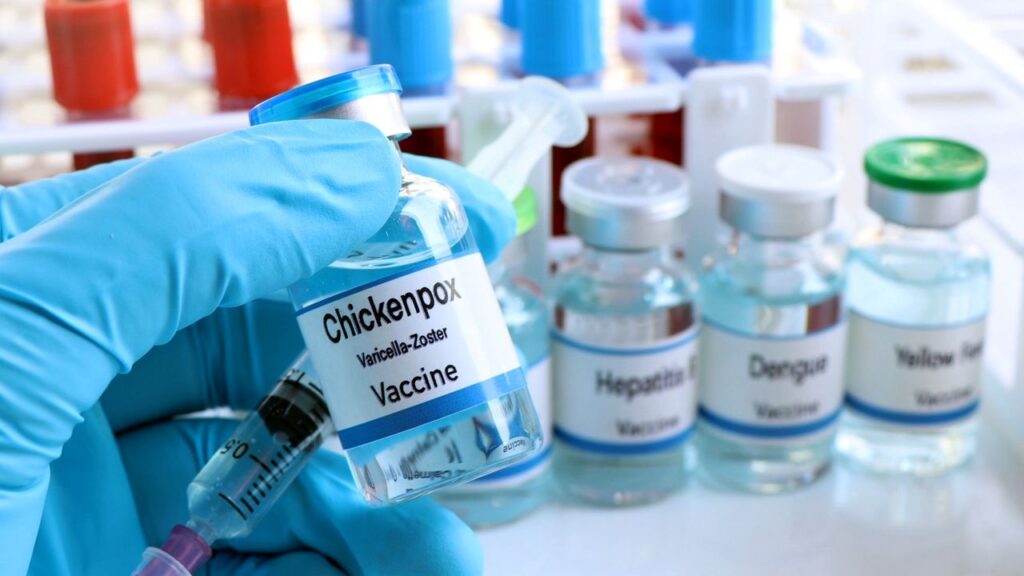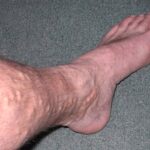Varicella, commonly known as chickenpox, is a highly contagious disease caused by the varicella-zoster virus (VZV). Though often self-limiting in children, varicella can result in severe complications such as bacterial superinfections, pneumonia, and encephalitis, particularly in immunocompromised individuals and adults. The introduction of the varicella vaccination has dramatically reduced incidence, morbidity, and mortality associated with this preventable disease.

Understanding the Varicella Vaccine: Composition and Types
The varicella vaccine is a live attenuated vaccine, meaning it contains a weakened form of the varicella-zoster virus that stimulates immune response without causing disease in healthy individuals. Two formulations are currently in use:
- Monovalent Varicella Vaccine – Targets only VZV.
- Combination Vaccine (MMRV) – Includes measles, mumps, rubella, and varicella in a single injection.
Both formulations have been proven safe and effective, though monovalent vaccines are preferred for the first dose in certain age groups to minimize febrile seizures.
Immunization Schedule and Recommendations
Routine Vaccination Schedule
| Age | Dosage | Interval |
|---|---|---|
| 12–15 months | 1st dose | — |
| 4–6 years | 2nd dose | At least 3 months after 1st dose |
- Children: Two-dose series starting at 12 months of age.
- Adolescents and Adults without Evidence of Immunity: Two doses 4–8 weeks apart.
- Catch-up Vaccination: Recommended for individuals without a documented history of varicella or vaccination.
Special Considerations
- Post-exposure Prophylaxis: If administered within 3–5 days after exposure, the vaccine can prevent or mitigate disease.
- Healthcare Workers, Teachers, Military Personnel, International Travelers: Strongly recommended if no prior immunity.
Effectiveness and Duration of Protection
Clinical studies have demonstrated that two doses of varicella vaccine are approximately 98% effective in preventing any form of varicella and nearly 100% effective in preventing severe disease.
- One-dose effectiveness: 70%–90%
- Breakthrough infections: Milder, shorter duration, fewer lesions
Long-term immunity is expected, though waning immunity has been observed in rare cases. Ongoing surveillance supports the effectiveness of two-dose regimens.
Safety Profile and Common Side Effects
Varicella vaccines have undergone extensive safety evaluations. Most adverse effects are mild and self-limiting.
Common Side Effects:
- Injection site redness, swelling, or soreness
- Mild fever
- Mild rash (1–3 weeks post-vaccination)
Rare but Serious Adverse Events:
- Febrile seizures (more common with MMRV than with separate MMR + varicella)
- Anaphylaxis
- Vaccine-strain varicella in immunocompromised individuals (extremely rare)
Continuous post-marketing surveillance systems such as VAERS in the U.S. help monitor safety trends.
Contraindications and Precautions
Varicella vaccination is contraindicated in the following individuals:
- Severe allergic reaction to vaccine components (e.g., gelatin, neomycin)
- Immunosuppression (e.g., cancer chemotherapy, organ transplant)
- Pregnancy (live vaccines are contraindicated)
- Recent receipt of blood products or immunoglobulins
Precautionary Measures:
- Delay vaccination in moderate to severe acute illness
- Evaluate risks in individuals with HIV or other immune conditions
Herd Immunity and Community Impact
High vaccine coverage not only protects individuals but also contributes to herd immunity, reducing the overall circulation of VZV in the population.
Public Health Impact:
- Over 90% decline in varicella cases in countries with routine immunization
- Significant reductions in hospitalizations and deaths
- Decreased incidence of herpes zoster in vaccinated populations
Global Implementation and Coverage
Countries with Routine Varicella Immunization
- United States: Introduced in 1995, two-dose schedule adopted in 2006
- Germany, Australia, Canada, Japan: Routine childhood immunization
- United Kingdom: Currently limited to specific risk groups, routine use under consideration
Global coverage varies based on healthcare infrastructure and cost-effectiveness assessments.
Future Directions and Research
Research continues to monitor long-term vaccine immunity, the potential need for booster doses, and interactions with the herpes zoster vaccine in older populations.
Varicella-Zoster Virus Vaccine Development Pipeline:
- Next-generation live vaccines
- Subunit vaccines for immunocompromised hosts
- Combined formulations to improve compliance and coverage
Frequently Asked Questions:
Q1: Can adults get the varicella vaccine?
Yes. Adults without evidence of immunity should receive two doses at least four weeks apart.
Q2: Is the varicella vaccine safe during pregnancy?
No. It is contraindicated. Women should avoid pregnancy for at least one month after vaccination.
Q3: What if someone gets chickenpox after one dose?
Breakthrough infections are usually milder and shorter. A second dose is recommended for improved protection.
Q4: Can someone vaccinated still get shingles later?
Yes, but the risk is lower. The live virus can remain dormant and reactivate, though less frequently than in unvaccinated individuals.
Q5: Is varicella vaccination mandatory?
In many countries, it’s part of the routine childhood immunization schedule. Policies vary globally.
Varicella vaccination remains a cornerstone of preventive healthcare, significantly reducing the burden of a once-common childhood disease. With demonstrated safety, strong efficacy, and public health benefits, adherence to recommended schedules and continued global adoption are essential to eliminate varicella-related complications and mortality.

